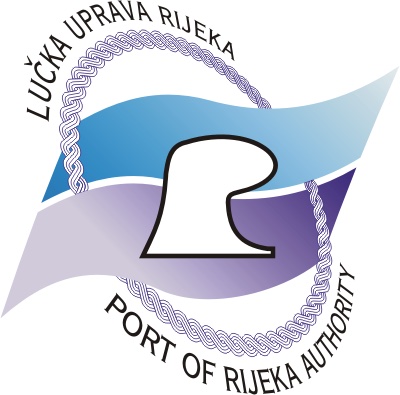By 2030, the Port of Rijeka will preserve the role of the most important intermodal centre and the main entry/exit port for Central and Eastern Europe in the Republic of Croatia. New opportunities for gradual expansion and construction of the container terminal on the island of Krk will be explored, as well as preservation and development of the projects implemented to improve the existing port infrastructure and the extension of port facilities to build a new infrastructure for the reception of large cruise ships.
The Port of Rijeka Authority has a traffic control system at six locations. All protected locations are communicatively connected into a single system via different communication technologies (LAN over optics, wireless LAN), and are managed from a single center. Each location is essentially a local access control system that can operate completely autonomously and independently. With the implementation of the pilot action in the framework of the PROMARES project, the existing passage control system at the following locations: Mlaka Entrance, Žabica Exit, Brajdica – service entrance, Brajdica – official entrance / exit, Breakwater and the Administrative Building has been modernized as follows:
– replacement of existing GRANT controllers,
– replacement of all passage control elements that are damaged or worn out,
– installation of new elements of passage control in accordance with the current situation and needs,
– construction and craft works for the realization of the full functionality of control of the passage at the subject locations.
Modern equipment was procured, which is used today for the mentioned purpose. These solutions are in line with the latest world practice for the protection of areas of similar purpose (ports). The new control devices are microprocessor controlled and network oriented. Users received a fully automated system for submitting applications for entry into port areas managed by the Port of Rijeka Authority. They can submit and track the status of the request online. After approval through their own user page, they can see the status of all requests. The possibility of all types of payments has been implemented, even the prepaid variant. Users have access to the records of entry and exit for trucks with the aim of optimizing and planning the operation of trucks. The introduction of the “booking” system for the needs of the container terminal affected the balancing of the traffic pressure of trucks during the working day. The goal was to reduce traffic peaks and thus relieve the port operational area from unnecessary detention and entry of trucks to the same.
The following issues are improved:
– The level of security from the aspect of ISPS has increased;
– Greater speed and ease in submitting requests and announcements for arrival in port areas;
– Possibility to control the arrival of trucks in port areas;
– Balancing road traffic pressure;
– A completely digital process.
Share this article in your social media
Although we ensured to have up-to-date and accurate information, the publisher OPEN ENLoCC, nor the editor and the author, are not liable for errors and omissions. The publisher and the editor did not test products or services described and their inclusion does not imply any form of endorsement. By accepting advertisements in this publication, the publisher does not warrant their accuracy, nor accept responsibility for their contents. The publisher welcomes unsolicited manuscripts and illustrations but can accept no liability for their safe return. Reproduction (in whole or in part) of any text, photograph or illustration contained in this publication without the written permission of the publisher is strictly prohibited.
© 2022 OPEN ENLoCC All rights reserved.
European regional review, Issue SPECIAL 2022/2
Share this article in your social media
Although we ensured to have up-to-date and accurate information, the publisher OPEN ENLoCC, nor the editor and the author, are not liable for errors and omissions. The publisher and the editor did not test products or services described and their inclusion does not imply any form of endorsement. By accepting advertisements in this publication, the publisher does not warrant their accuracy, nor accept responsibility for their contents. The publisher welcomes unsolicited manuscripts and illustrations but can accept no liability for their safe return. Reproduction (in whole or in part) of any text, photograph or illustration contained in this publication without the written permission of the publisher is strictly prohibited.
© 2022 OPEN ENLoCC All rights reserved.
European regional review, Issue SPECIAL 2022/2

